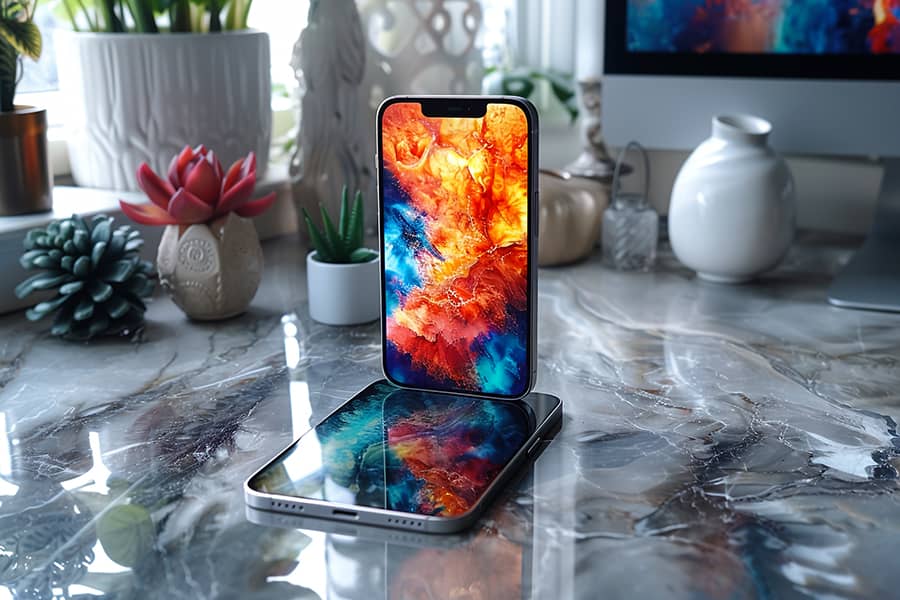A widely used food coloring has been discovered to temporarily render skin and muscle see-through.

Overview of the Discovery
In a groundbreaking revelation, scientists have disclosed that a widely used food dye, renowned for its vivid colors, has an extraordinary capacity to temporarily make skin and muscle transparent. This surprising finding opens thrilling possibilities not only in the culinary field but also in medical imaging and research. The chemical makeup of this coloring interacts with biological tissues in a fascinating manner, hinting at potential uses that extend well beyond visual enhancements in our favorite dishes.
Consider the implications for medical science: improved visualization could transform surgical practices by enabling physicians to observe underlying structures without intrusive procedures. Moreover, this discovery prompts compelling questions about how commonplace substances might be reassessed regarding their safety and functionality. As we explore further into the potential of everyday ingredients, it encourages us to rethink their significance not just on our tables but also within groundbreaking scientific investigations and innovations that can significantly enhance both diagnostic and treatment strategies in healthcare
What is the Food Coloring?
Food dye is more than just a lively enhancement to our beloved snacks; it serves a vital role in both the culinary and emotional experience of dining. Traditionally sourced from natural elements like plants and minerals, contemporary food dyes now include synthetic variations that can produce a range of colors unimaginable with conventional ingredients. These hues do more than beautify; they also shape perceptions, evoking emotions and memories linked to specific tastes or meals. For example, the vibrant red of strawberries often brings forth feelings of summertime bliss, while a deep green may suggest freshness and vitality.
Notably, recent discoveries about commonly used food dyes reveal unexpected uses beyond simple aesthetics—challenging our comprehension of their effects on the body itself. Researchers have found instances where particular dyes can interact with biological tissues in ways that temporarily modify their appearance, making skin and muscle appear semi-transparent. This occurrence prompts significant questions about the connection between what we consume and how we view ourselves both internally and externally. As consumers grow increasingly aware of these effects, the focus
How Does it Work on Skin?
When the commonly used food dye is applied to the skin, it interacts with both the outer epidermis and deeper dermal layers, producing a semi-translucent effect. This occurrence is due to the dye’s capability to absorb certain light wavelengths while allowing others to pass through. Consequently, underlying structures such as blood vessels and muscles can become visible for several hours, resulting in an intriguing interplay between color and transparency. The pigment essentially modifies how light refracts off our skin, opening new possibilities for exploration in medical imaging and aesthetic applications.
The ramifications of this temporary change go beyond mere fascination; they could transform how we visualize internal anatomy without invasive techniques. Imagine being able to non-invasively detect muscle inflammation or vascular issues with just a topical application! Furthermore, this revelation ignites extensive discussions on the balance between aesthetics and functionality—could such methods reshape beauty norms by offering an exposed view into our biology? As we further investigate this process, it may lead to innovative strategies in both art and science that celebrate
Temporary Effects on Muscle Tissue
The occurrence of transient transparent muscle tissue prompts fascinating inquiries regarding the operation and durability of our bodies. On a cellular scale, the use of specific food dyes seems to interact with muscle fibers, modifying their structural stability without causing lasting harm. This distinct effect facilitates unparalleled visualization of hidden anatomy, which could transform educational techniques in biology as well as strategies in surgical planning.
In addition, this temporary clarity offers an unforeseen chance to examine dynamic physiological activities—such as contraction and relaxation—while monitoring instantaneous shifts in blood flow or oxygen levels. By employing this groundbreaking method, researchers may reveal new understandings of muscular disorders or injuries by offering a clearer view of how muscles respond under duress or injury. The potential consequences reach beyond academic inquiry; athletes striving for peak performance may leverage these discoveries to refine training programs or comprehend their physical limits with unmatched precision.
Potential Medical Applications and Implications
The identification of a food dye that temporarily makes skin and muscle transparent opens thrilling possibilities in medical diagnosis and treatment. Envision a future where doctors can perform non-invasive examinations of deeper tissues with remarkable precision—evaluating blood circulation, identifying tumors, or even tracking the effectiveness of treatments as they happen. This ability not only holds the promise of improving early detection rates but could also usher in more tailored approaches to healthcare, as physicians can visualize unique anatomical features specific to each patient without resorting to invasive methods.
Furthermore, this groundbreaking usage prompts critical inquiries about ethical ramifications and safety issues. While the prospect of improved diagnostic devices is exhilarating, we must proceed cautiously regarding long-term impacts on human biology when integrating new substances into medical use. Additionally, how could such visibility reshape our comprehension of human beauty or societal norms concerning body image? As we delve into this vivid frontier, striking a balance between innovation and accountability will be essential—ensuring that developments benefit humanity without crossing boundaries that might take advantage of vulnerabilities or worsen
Safety Concerns and Side Effects
While the revelation of a food dye that temporarily renders skin and muscle see-through is remarkable, it presents serious safety issues that require thoughtful attention. The long-term consequences of consuming such compounds are largely unclear, leading to concerns about how our bodies might respond with continuous exposure. Immediate side effects could range from allergic reactions to increased sensitivity in certain individuals, but what happens if this threshold changes with repeated intake? For a society that is becoming more aware of ingredient lists and health ramifications, this development may feel like entering unfamiliar ground.
Beyond allergic reactions, there’s an ethical aspect that arises from this situation. If such a compound becomes popular in food without comprehensive testing, we risk normalizing its use while failing to grasp the potential effects on our health. Public confidence in food additives is already tenuous; the introduction of something as strange as temporary clarity might provoke fear rather than fascination among buyers. Therefore, more thorough research is essential—not only to determine the safety of using this dye in edibles but also to explore its
Public Reactions to the Discovery
Public responses to the revelation of a food dye that makes skin and muscle temporarily translucent have varied from amazement to doubt. Social media channels are buzzing with a mix of intrigue and ethical discourse. Some supporters rejoice in the prospect of scientific advancements in medical imaging, imagining a future where doctors can evaluate internal conditions without invasive methods. Conversely, others voice concerns about the ramifications of such technology being available in stores, questioning potential misuse or commercialization beyond acceptable limits.
Moreover, artists and creatives are welcoming this newfound transparency as a means of expression. Conceptual artworks centered on visibility delve into themes of vulnerability and authenticity, sparking dialogues about identity and societal views on beauty. On the flip side, there is apprehension among health advocates who warn against trivializing an element that could fundamentally change our comprehension of human anatomy – stressing the importance of safety measures before such substances are widely introduced into the marketplace. The interplay of these contrasting viewpoints weaves a complex fabric of conversation around not only what we consume but also how innovation influences our
Future Research Directions in this Field
As scholars dig further into the ramifications of this revolutionary finding, forthcoming research will certainly examine its possible uses in healthcare sectors. One captivating avenue involves utilizing the transparent characteristics for improved imaging methodologies. This development could enable medical professionals to see underlying tissues without invasive methods, potentially transforming diagnostic and surgical approaches. Moreover, investigations may aim at fine-tuning the molecular structure of the food dye to enhance visibility while reducing any negative effects, thus facilitating safer applications.
Another exciting field of inquiry pertains to understanding the long-term biological consequences of integrating such compounds into living entities. Studies could explore how continuous exposure influences cellular functions or overall well-being, yielding crucial insights that shape safety protocols for usage in both culinary science and beauty products. Additionally, researchers might look at leveraging these discoveries to craft new treatments or advancements in sports medicine—like real-time evaluation systems that monitor muscle function through see-through skin during exercise—providing athletes with a distinct edge. As we pursue these paths, teamwork across various fields will be essential to fully harness
Conclusion: Summary and Final Thoughts
In this groundbreaking discovery, the ramifications of a popular food dye changing skin and muscle into momentarily transparent layers spark intricate discussions regarding the convergence of art, science, and ethics. While initially seeming like a novelty or trick, this revelation invites more profound inquiries into how such characteristics could be utilized in areas such as medicine—perhaps in non-invasive diagnostics or surgical techniques that require better visibility. Picture surgeons being able to visualize underlying tissues without performing an incision; the implications for patient care and outcomes are remarkably promising.
Nonetheless, we must proceed with caution regarding ethical considerations. The potential for abuse is considerable, raising concerns about privacy rights and bodily autonomy if such substances were used without consent or awareness. As a society increasingly fixated on appearances and perception, we must also reflect on the psychological effects of altering our looks so fundamentally—even if temporarily. Striking a balance between innovation and responsibility will be vital as we navigate these untested territories; it is crucial that any application upholds respect for human dignity while promoting advancements
Recent Posts
-
Advice for achieving a healthier and more joyful lifestyle
September 16, 2024




